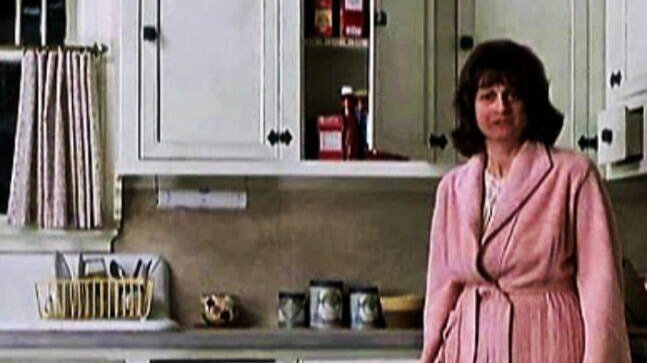Georgina Downey is an art historian who has published widely on the domestic interior in art. She has received an Australian Academy of the Humanities Travel Grant (2006) and University of Adelaide small research grants. Her most recent books are Domestic Interiors: Representing Home from the Victorians to the Moderns, (2013) and Designing the French Interior: The Modern Home and Mass Media (edited with Anca Lasc and Mark Taylor 2015) both published by Bloomsbury. Her third book, Domesticity under Siege: When home isn’t safe [due 2021] with co-editors Professor Mark Taylor, and Dr Terry Meade, is under contract.
Safe at home?
Having explored the most powerful and pervasive ideas about home in Part one, today I will focus on how, under home isolation we might arrange, demarcate and order domestic private spaces. Humans have been ‘dwellers within’ for millennia. For us, defining enclosed space as ‘for this, or for that, for me, or for you’ is something we seem hard-wired to do, whether that space is a tent, or a thousand room palace. Defining space, giving it meaning, and associating it with various behaviors, attitudes and ideas, is also something we are increasingly having to do since spouses, children, flatmates and other co-inhabitants are spending dramatically more time together than usual.
Bringing a necessary humor to the difficulties of doing this, is the focus of [for me] particularly interesting subset of current ‘corona isolation’ memes, each of which turn on notions of demarcation of home into certain spaces. The following examples are only the tip of the iceberg, a small selection from a huge range of choices that are daily growing and being shared, so apologies if your favorites aren’t here; I’m an elderly Gen-X and probably not on the right platforms [‘what’s Tick Tock’] to get the latest ones!
How, you may ask, am I defining meme? Here? In the general agreed definition, that is, as a ‘self-replicating unit of culture’ created for and shared on social media. Memes are sometimes blamed for destroying democracy, in the way that they short-circuit political debate, by radically simplifying complex notions, but in any case, love them or loathe them; these are significant enough to have their own scholarly discipline now called ‘memetics’.
Picked out for today’s topic of defining enclosed space under the radical limits of coronavirus isolation, is ‘Where is your next travel destination’ This meme illustrated below gets its humorous boost from playing on the notion that during confinement different rooms at home become exotic. As we can see ordinary rooms in the house are enlivened by giving them dreamy and tantalizing names, such as the destinations in a glossy travel brochure.
The punch line is that since borders have been closed in nearly every country, and airline flights shut down, the only ‘travel’ we will be doing is through our own rooms at home. Missing from this list but we can add them to our travels if we have them are those icons of the Aussie dream of the house on the quarter acre block; ‘Frontyardia’ and ‘Backyardia’.
The well-worked through idea this meme works on is well established in art, fiction, film and theatre. It draws on the notion that via the imagination of the captive or quarantined individual travelling, the self can travel where the body cannot. For precursors we need only think of Robert Louis Stevenson writing Robinson Crusoe from his invalid’s bed; we might cross continents, with prisoners in mind, and think of ‘Rubashov’, the prisoner in Arthur Koestler’s Darkness at Noon, determinedly tapping out a language of self-expression the stony walls of the prison to his cell neighbour, only known as Prisoner #402.
But above all, we might think of Xavier de Maistre’s A Journey Around My Room (Voyage autour de ma chambre (1794).
This is the late eighteenth century story of a young aristocrat, confined to his home in Turin for forty-two days as punishment for fighting a duel. Desperately bored and determined to keep himself occupied, Xavier looks at the furniture, engravings, etc. in his small bedroom, as if they were scenes from a voyage in a strange land. He praises this voyage because it does not ‘cost’ anything, and for this reason he recommends this kind of imaginative travel to the poor, the infirm, and the lazy. His room is a long square, and the perimeter is thirty-six paces.
Xavier writes "When I travel through my room,", "I rarely follow a straight line: I go from the table towards a picture hanging in a corner; from there, I set out obliquely towards the door; but even though, when I begin, it really is my intention to go there, if I happen to meet my armchair en route, I don’t think twice about it, and settle down in it without further ado." Xavier’s story plays with the reader’s imagination, making the familiar, [the all too familiar], seem strange and wonderful.
This next meme similarly evokes the de Maistre idea, but gives us a floorplan to go with it.
The floorplan linked to wit, or at least to amusement, first came about with the invention of the game ‘Cluedo’ during the Blitz years of the Second World War in England. The civilian population at this time were quarantined, at least between certain hours, [the hours of curfew] at home, not only at home but in semi-darkness, in order to give no visual lead to the German bombers flying night raids overhead.
Under these terrible conditions, that were enduring for several years [1939-945] parents and guardians became desperate for new kinds of games and distractions with which to keep children happy, quiet, occupied, busy, and safe in cellars and bunkers. Serving this need, the inventor of Cluedo, an English musician named Anthony Pratt, developed the basics of the game with the help of his wife during the Blitz. The Pratts eventually sold the copyright to Waddingtons and Hasbro, after which it became one of the most popular board games of all time. With its much loved eight rooms, six characters and six weapons, Cluedo over its lifetime has already earned over a billion dollars, which looks set to rise as sales of board games has tripled in the last month due to coronavirus quarantine around the world. It seems that under lock-down families the world over are buying old favorite games online. These also include Monopoly, Scrabble and Operation as well as chess and chequers.
Before Cluedo, house floorplans were not considered as playful, cultural visual figures to be read by all of us, children as well, not only architects, builders and interior designers.
Such forms of spatial thinking how ever go back to even more interesting use of the floorplan as a trope or metaphor.
In 1917, in order to explain how the mind works, Sigmund Freud used the following analogy in which he basically relies on the notion of a floorplan. He said
“Let us therefore compare the system of the unconscious to a large entrance hall, in which the mental impulses jostle one another like separate individuals. Adjoining this entrance hall there is a second, narrower, room—a kind of drawing room—in which consciousness too, resides. But on the threshold between these two rooms a watchman performs his function.” (Freud 1917: 336–7)
Here the super ego is the ‘watchman’ or butler, ushering ‘mental impulses’ in and out of various rooms. Freud knew that his listeners at this introductory lecture would immediately conjure up internal mental pictures not only of their own entrance halls and drawing rooms but also the familiar uses and social activities associated with each of these rooms.
Through his analogy to a ‘chain of command’ between rooms, with the entrance hall, or ‘usher’, reporting to the drawing room, overseen by ‘the watchman on the threshold’, Freud made his points about how the tripartite structure of the unconscious (ego, super-ego, and id) related to each other. He knew that he only had to name the rooms and his comparison between actual domestic space and the spaces of the mind would be made clear.
So you see the seamless ease through these memes ‘turn’, ‘speak’ and entertain, which is because of our human facility in equating and extending ‘mental space’ into actual space. But perhaps Jean Piaget put it best when he said ‘We organize our worlds by first organizing ourselves’.
In Part three of ‘The Meaning of Home in Covid Times’ we will be looking at art about interment that shows shelter being decorated, organised, beautified and mapped as a means of fortifying the mind in times of crisis.







